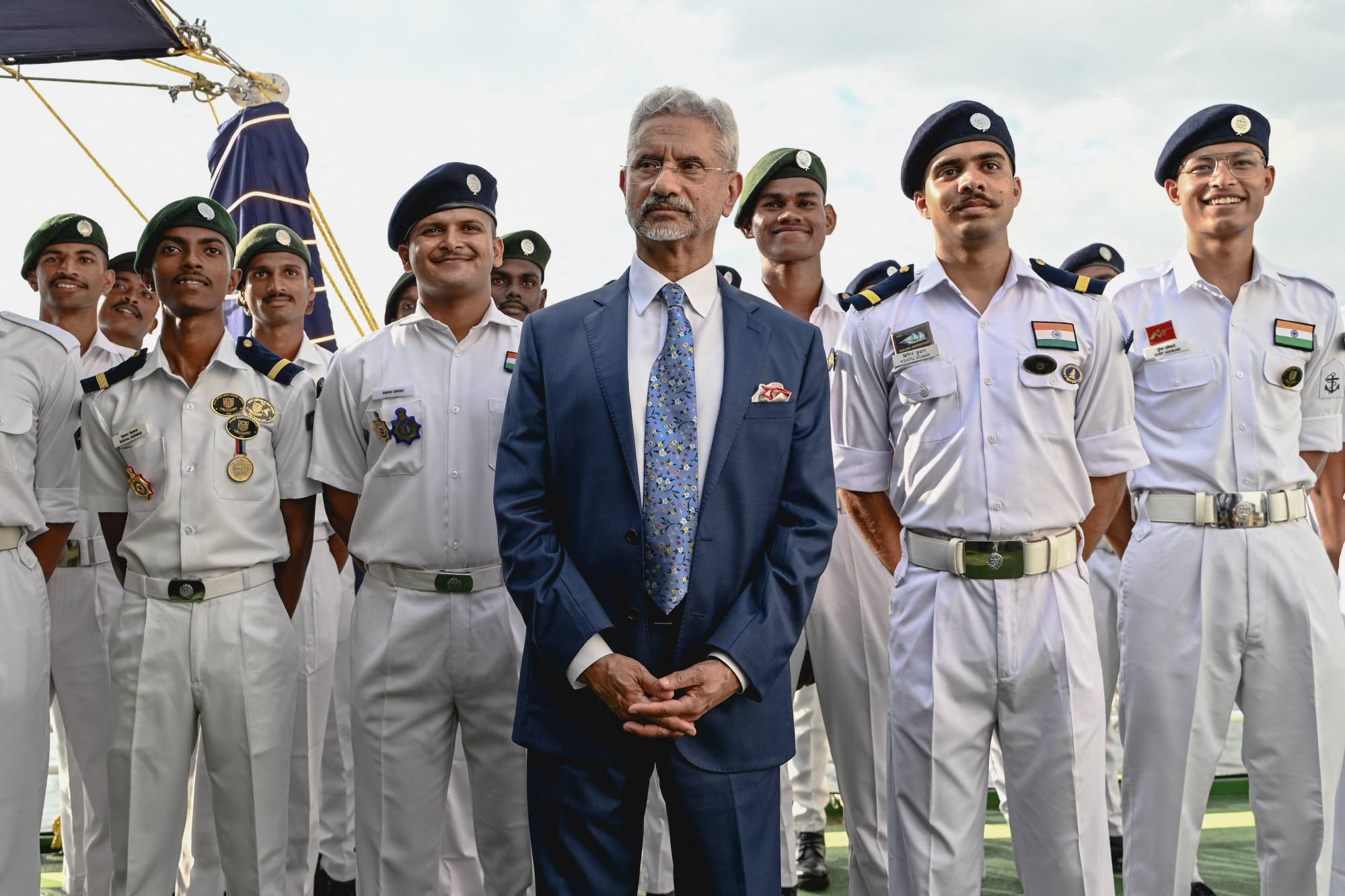His comments came after the Chinese navy and coastguard had clashed with their Philippine counterparts in the South China Sea for several months, including the use of water cannons to disrupt the activities of Philippine boats.
High-altitude tunnel becomes new flashpoint in rising India-China tensions
High-altitude tunnel becomes new flashpoint in rising India-China tensions
On March 23, Chinese foreign ministry spokesman Lin Jian responded to Jaishankar’s remarks, calling on “third countries” not to “interfere”.
Daniel Markey, a senior South Asia adviser at the United States Institute of Peace, said India was concerned about stability in the South China Sea as like most other regional economies, it relies on the unhindered movement of goods through the disputed waterway.
“However, India also sees this dispute through the lens of its bilateral competition with China. India perceives that if China can coerce less powerful regional actors to concede on maritime claims, Beijing will only be more aggressive in its territorial disputes with India,” Markey said.
Despite 22 rounds of negotiations on the Line of Actual Control (LAC) – the de facto boundary between India and China – the two nations have failed to resolve their differences on the border issue, Markey said.
Last month, Beijing and New Delhi held another round of talks on achieving disengagement in the Ladakh sector of the LAC but failed to reach an agreement.

Both countries have a long-running dispute over territory spanning thousands of kilometres in the Himalayas. They fought a border war in 1962 and have clashed along the LAC over the years.
The latest discussion focused on disputes along the western section of the line between Chinese-controlled Aksai Chin and Indian-controlled Eastern Ladakh.
After their first round of talks in May 2020, the two countries were embroiled a month later in the deadliest conflict between them in 45 years in the Galwan Valley along the border. At least 20 Indian soldiers and four Chinese were killed in the skirmish.
The border remained a core issue, Markey said, adding that given China’s status as the more powerful state, India had been aiming to boost its negotiating leverage by linking the border with other issues.
“India’s outreach to other Asian partners, including Japan and the Philippines, is intended to demonstrate to Beijing that it is not alone. China’s irritation with India’s ‘interference’ in the South China Sea issue will be perceived in New Delhi as evidence of a successful policy, one that will enhance its negotiating posture,” Markey said.
As Myanmar’s civil war halts India-funded project, will China take advantage?
As Myanmar’s civil war halts India-funded project, will China take advantage?
Last month, India and Japan agreed to step up security cooperation, including in defence equipment and technology transfers. In February, the Indian Army and the Japan Ground Self Defence Force conducted a two-week military exercise in the Indian state of Rajasthan.
During Jaishankar’s visit, India said it hopes to explore new areas of cooperation with the Philippines, including in defence.
Commodore C Uday Bhaskar, a security and strategic affairs expert, the South China Sea is relevant in India’s “maritime calculus” in the region. “However, I do not see India getting militarily involved in the South China Sea dispute were it to escalate,” said Bhaskar, who is a retired Indian Navy officer.
Sripathi Narayanan, a Delhi-based security analyst, said that while India will continue to support a rules-based order in the South China Sea, the issue is separate from the LAC conflict. “Neither of them has any bearing on the other,” he said.
Yet the LAC issue is similar to the South China Sea dispute in that talks between Beijing and other claimant states to agree on a code of conduct are stuck “in limbo”, Narayanan added.
China and the Association of Southeast Asian Nations have been trying to finalise a framework for the code of conduct, but progress has been slow since it was first mooted in 2002.
According to Pooja Bhatt, a Delhi-based maritime and regional security analyst, the South China Sea issue is crucial for India because of its need for secure maritime connectivity and geopolitical stability.
“All stakeholders have the right to voice their concern and take a stand,” said Bhatt, who is also the author of Nine Dash Line: Deciphering the South China Sea Conundrum.
This has included assisting the Philippines in building its military capabilities, such as through the sale of defence equipment and joint training exercises.
The two countries also held a maritime exercise in the West Philippine Sea in December, while an Indian coastguard ship docked in a Manila port last month on a four-day visit.
Philippines debates mandatory military training to boost its readiness for war
Philippines debates mandatory military training to boost its readiness for war
India’s missile sale to the Philippines is critical as it grows its defence industry through the export of military equipment, Markey said. The sale is also aimed at sending a message to the Chinese navy, he added.
“By helping the Philippines defend its maritime claims against Chinese encroachment in the South China Sea, India indirectly advances its strategic ambition to stave off Chinese military power in seas closer to India’s shores,” Markey said.
India also wants to ensure that China does not expand its military activities in the Indian Ocean, which is viewed by Delhi as its sphere of influence, he added.
The Chinese Navy has been sailing through the Indian Ocean towards the Gulf of Aden for its anti-piracy missions since 2008. It has also made port calls in Indian Ocean countries such as Sri Lanka.
Markey noted, however, that China’s far-reaching naval ambitions could also indirectly benefit India’s maritime security.
“Presumably, the more China must expend its resources in maritime disputes closer to its shores, the less it will be able to pursue ambitions in India’s neighbourhood.”


